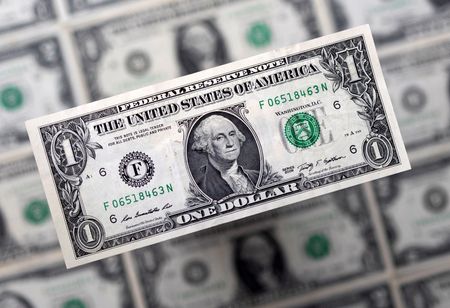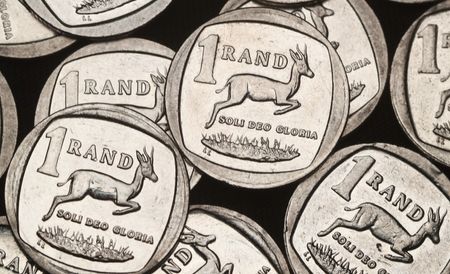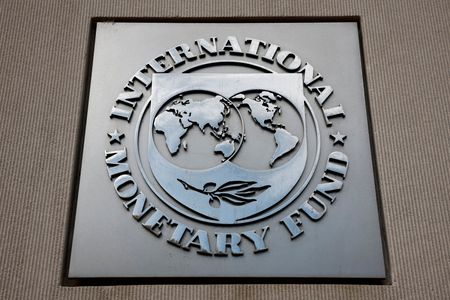By Chuck Mikolajczak
NEW YORK (Reuters) -The U.S. dollar edged higher on Wednesday, rebounding from earlier declines as investors await fresh signals that global trade battles will continue to ease.
The dollar index began the week with a jump of more than 1% on Monday and hit a one-month high as the United States and China reached a deal to temporarily cut reciprocal tariffs and tamped down concerns that a trade war between the world’s two biggest economies could lead to a global recession.
But the greenback fell on Tuesday after a gauge of consumer prices was below economists’ expectations as declining food costs partially offset rising rents.
“Obviously, everything’s still pretty focused on trade these days, that’s still kind of a big catalyst moving things around,” said Brad Bechtel, global head of FX at Jefferies in New York.
“There’s a lot of volatility in the Asian currency space still, but the dollar should still be in a counter-trend bounce and then will ultimately start to turn lower again, potentially on some sort of backdoor or behind-closed-doors arrangement.”
The dollar index, which measures the greenback against a basket of currencies, rose 0.06% to 101.04, with the euro down 0.06% at $1.1177.
Investors were also digesting news South Korea’s Deputy Finance Minister Choi Ji-young met with Robert Kaproth of the U.S. Treasury on May 5 to discuss forex markets, which helped send the dollar to its lowest in a week against Korea’s won.
But the moves in Asian currencies eased somewhat after Bloomberg reported the U.S. is not negotiating for a weaker dollar as part of tariff talks, citing a person familiar with the matter.
The won strengthened 0.84% against the dollar to 1,402.66 per dollar after gaining as much as 2.1%. Against the Japanese yen, the dollar weakened 0.52% to 146.71 after falling as much as 1.2% on the session.
Goldman Sachs analysts said in a note to clients that while details of the meeting are scarce and talks may be part of an ongoing dialogue, “it puts renewed focus on the scope for undervalued trade surplus currencies to appreciate in a weaker dollar environment.”
In light of the easing trade tensions, markets have dialed back expectations for rate cuts from the U.S. Federal Reserve this year, pricing in a 74% chance for the first cut of at least 25 basis points (bps) at the central bank’s September meeting, according to LSEG data, compared with the prior view for a cut in July.
Several major brokerages, including Goldman Sachs, JPMorgan and Barclays, have recently scaled back their U.S. recession forecasts and their view of Fed policy easing.
Chicago Fed President Austan Goolsbee said data showing temperate consumer inflation in April does not necessarily reflect the impact of rising U.S. import tariffs, and the Fed still needs more data to determine the direction of prices and the economy.
Fed Vice Chair Philip Jefferson noted a similar sentiment, saying the recent inflation data indicated good progress towards the central bank’s 2% goal, but the outlook is now uncertain due to the possibility that new import taxes will drive prices higher.
Sterling weakened 0.32% to $1.3261. Bank of England interest rate-setter Catherine Mann said she voted to keep borrowing costs on hold last week – having sought a big 50-basis point cut in February – because Britain’s labor market had been more resilient than she expected.
(Reporting by Chuck Mikolajczak, additional reporting by Kevin Buckland and Linda Pasquini; Editing by Kirsten Donovan and Diane Craft)








